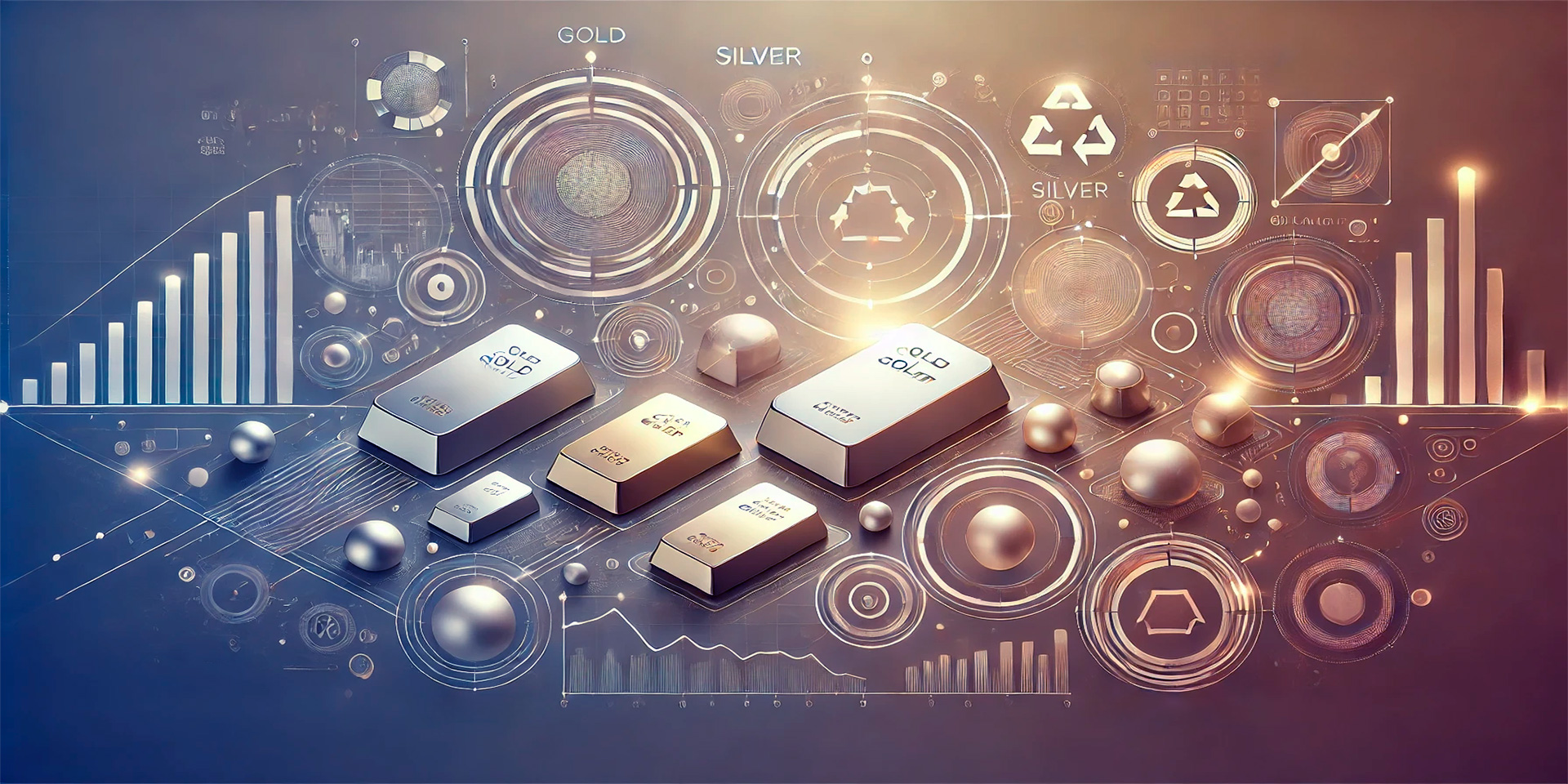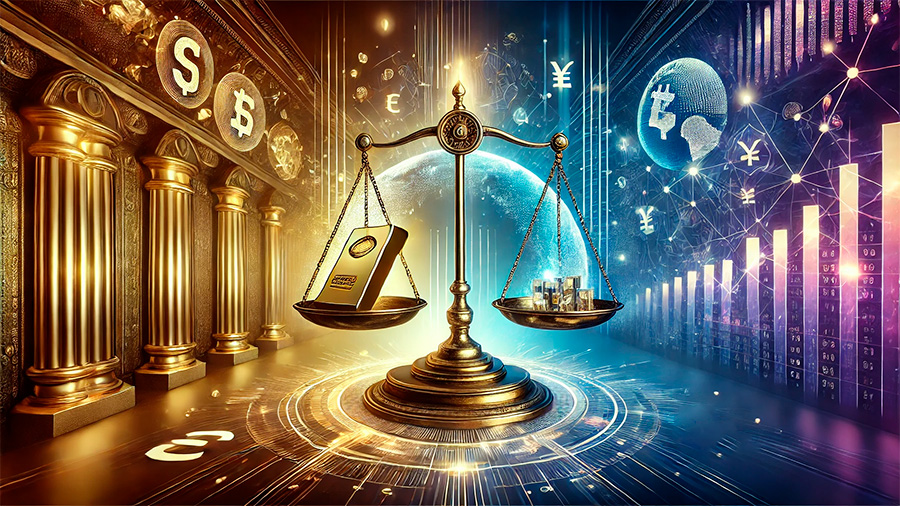Precious Metals in the Modern Economy: A Look at the Future

Precious metals such as gold, silver, platinum, and palladium have been integral to the global financial system for centuries. Historically, these metals were used as the foundation for monetary systems, but their role has evolved with the rise of fiat currencies and modern financial instruments. Today, precious metals continue to serve as a store of value, hedge against inflation, and key component in diverse industries. However, emerging trends in the global economy, technological advancements, and shifting market dynamics are reshaping the future of precious metals. This article explores the evolving role of precious metals in global markets and national economies, highlighting the trends that will define their future significance.
The Evolving Role of Precious Metals in the Global Economy
Precious metals have always been seen as reliable assets, offering stability during times of economic turmoil. From being the backbone of the gold standard to their current role as a hedge against inflation and financial market volatility, the future of precious metals is influenced by several factors, including changes in monetary policy, technological innovations, and the growing demand for sustainable and eco-friendly alternatives.
1. Precious Metals as a Hedge Against Inflation
Inflation remains one of the biggest threats to financial stability, eroding the purchasing power of currencies. In response to inflationary pressures, investors turn to precious metals, particularly gold, as a safe-haven asset. With central banks around the world continuing to implement expansive monetary policies, such as low interest rates and quantitative easing, the demand for precious metals is expected to rise as more investors seek protection from the potential depreciation of fiat currencies.
Why precious metals are a hedge against inflation:
- Intrinsic value: Precious metals, unlike fiat currencies, are finite resources, which makes them more resilient to inflation and currency devaluation.
- Store of value: Historically, gold and other metals have retained their value over time, even during periods of hyperinflation or financial crises.
- Global demand: The demand for precious metals remains stable across multiple industries, from jewelry to electronics, which supports their long-term value.
2. The Impact of Central Bank Digital Currencies (CBDCs)
As digital currencies like Bitcoin gain popularity and governments explore Central Bank Digital Currencies (CBDCs), the demand for precious metals may undergo shifts. While some view cryptocurrencies as a potential competitor to gold, others believe that digital currencies and precious metals can coexist, especially as central banks look for ways to stabilize digital currencies through commodity-backed reserves. The future relationship between precious metals and CBDCs will likely play a significant role in shaping the financial landscape.
The potential impact of CBDCs on precious metals:
- New financial instruments: Governments might back digital currencies with gold reserves or precious metals to ensure stability, increasing demand for these assets.
- Enhanced market transparency: Blockchain technology, which underpins many cryptocurrencies, could be used to improve transparency in the precious metals market, making transactions more secure and efficient.
- Complementary assets: As CBDCs become more common, investors may diversify their portfolios by holding both digital currencies and precious metals, leveraging the strengths of each asset class.

The Role of Technology and Innovation in Precious Metal Markets
Technological advancements are reshaping industries and markets worldwide, and the precious metals sector is no exception. Innovations in mining technology, recycling processes, and manufacturing are likely to impact the future demand and supply of precious metals, as well as their role in global financial markets.
1. Advances in Mining Technology
Modern mining techniques are making it easier and more cost-effective to extract precious metals from the earth. New methods such as automation, artificial intelligence (AI), and 3D printing are driving efficiency in mining operations, reducing costs, and increasing the supply of precious metals.
How mining innovations are impacting the market:
- Increased supply: Technological advancements in exploration and extraction techniques are improving the availability of precious metals, which could impact long-term prices and accessibility.
- Cost reduction: Automation and AI-driven technologies are reducing operational costs, leading to more efficient mining practices that can help stabilize metal prices.
- Sustainability: New mining technologies also emphasize environmental sustainability, helping to reduce the ecological footprint of mining operations and improve regulatory compliance.
2. Precious Metals in Emerging Technologies
Precious metals are increasingly being used in cutting-edge technologies, from electric vehicles (EVs) to renewable energy solutions. Metals like lithium, platinum, and silver are integral to the development of green technologies, and as the global economy moves toward more sustainable practices, demand for these metals is expected to surge.
The future demand for precious metals in new technologies:
- Electric vehicles (EVs): Metals like lithium, platinum, and palladium are key components in batteries, fuel cells, and other electric vehicle technologies, driving up demand in the automotive industry.
- Solar and wind energy: Precious metals like silver are essential in the production of solar panels, and platinum is used in hydrogen fuel cells, contributing to the renewable energy market’s expansion.
- Consumer electronics: Silver, gold, and palladium remain critical in the manufacturing of smartphones, computers, and other high-tech devices, ensuring steady demand from the technology sector.

The Future of Precious Metals in the Global Financial System
As global markets continue to evolve, the role of precious metals in the financial system will be shaped by a variety of factors, including shifts in consumer demand, geopolitical events, technological advancements, and the future of monetary policy. While their role may shift from being the primary basis for currency to a more diversified role as a financial asset, precious metals will continue to be essential components of a resilient financial portfolio.
1. Geopolitical and Economic Uncertainty
Geopolitical events such as trade wars, conflicts, and instability in major economies can cause increased demand for precious metals. In times of uncertainty, investors often flock to gold and silver as a safe store of value. As long as geopolitical risks persist, precious metals will remain an important hedge for global investors.
How geopolitical factors influence precious metal markets:
- Safe-haven asset: In times of geopolitical turmoil, precious metals often rise in value as investors seek a stable store of wealth.
- Currency volatility: Global financial instability often leads to the devaluation of fiat currencies, boosting demand for gold and silver as alternative stores of value.
2. The Integration of Precious Metals into the Modern Financial System
Precious metals will likely continue to be an integral part of the global financial system. As investors seek ways to diversify their portfolios, metals like gold and silver will remain important assets in both the private and public sectors. Central banks may hold gold reserves as a hedge against currency fluctuations, while investors will use precious metals to mitigate risks associated with stock market volatility and inflation.
Precious metals in the financial system:
- Central bank reserves: Many central banks still hold substantial gold reserves, using the metal as a hedge against inflation and currency devaluation.
- ETFs and funds: Precious metal exchange-traded funds (ETFs) and mutual funds have made it easier for individual investors to gain exposure to precious metals without the need to buy physical metals.
- Commodity trading: The trading of precious metals on global commodity exchanges will continue to be an important way for investors to access the value of these metals and speculate on future price movements.
Conclusion
The future of precious metals in the global financial system is shaped by a combination of market trends, technological innovations, geopolitical developments, and economic shifts. As long as uncertainty and inflation persist, precious metals will remain a cornerstone of investment strategies, offering stability and protection against financial volatility. From their role in emerging technologies to their continued importance in wealth preservation, gold, silver, and other precious metals will continue to play a vital role in shaping the global economy and investment landscape. As such, investors looking for long-term stability and growth should consider precious metals as an integral part of a diversified portfolio in the years to come.
